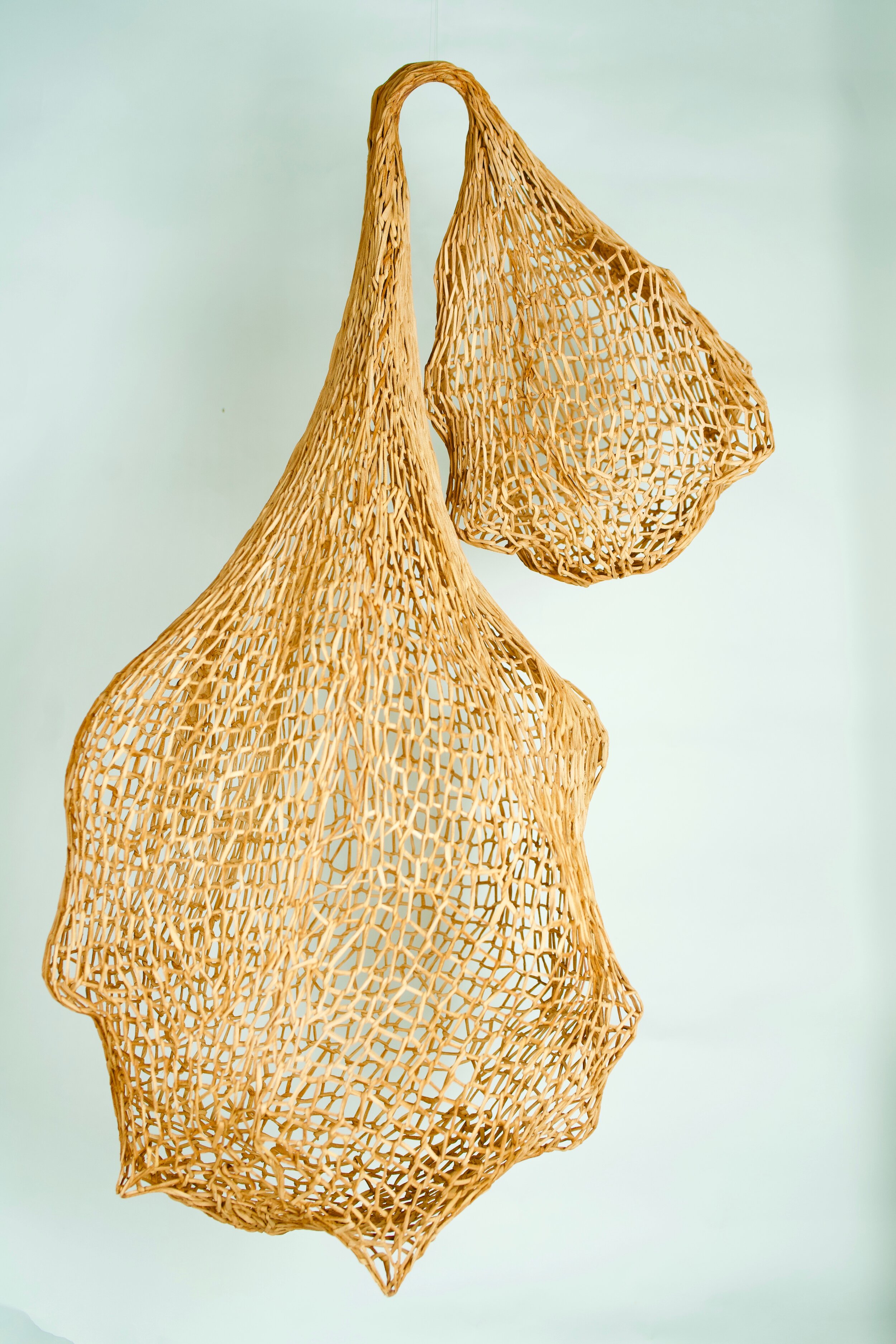ALICE SHEILDS & ESNA SU
USE DIFFERENT MEDIUMS TO IMMORTALISE MEMORY
Weaving narratives into her pieces, Central Saint Martin’s graduate Esna Su creates evocative handcrafted work made from leather cord. Aiming to “subtly explore the issues of identity and memory” in relationship to political instability, Su captures a sense of her heritage in her designs by using traditional Turkish techniques of weaving, twining and crochet. Her work, which takes the form of wearable sculptures, is a mix of tradition and contemporary craft.
Su uses design as a medium to explore issues of identity and memory, with a particular focus on how these are affected by political instability.
The Burden
photo credit: John Mcgrath
The Burden
photo credit: Michelle Marshall
The collection Burden references the struggle of Syrian refugees forced to abandon their homes and flee conflict. Su had personally observed the hardships of the refugees whilst in her hometown of Antioch in the south of Turkey, where many of the refugees crossed the border. For Su, the empty shell, made by moulding knitted vegetable tanned leather cord around cherished objects, represents the “memories of destroyed lives.”
The Burden
Her choice of material shares a direct relationship to the skin, with Su stating that it “once took the form of a body, now it embraces sentimental objects to form hollow shapes,” that in turn can “contain memories and the loss of the past.”
The Burden
21.06.20
Drawn to liminal spaces and industrial topography, Alice Shield’s explorations in porcelain act as documentation of the urban landscape. Using repeated mark making, it is Shield’s intention that the lines and detailed sections be read as “walkways that are drawn and translated from memory,” forming the basis of her ceramic forms.
“My practice begins with walking and the experiential process of the body’s movement through a landscape. For the past few years this landscape has predominantly been urban. I am drawn to liminal spaces and neglected areas of my city where the visual language is dominated by the industrial topography of its past and present”
16.07.20
Sections of each walk are presented by blocks of collaged porcelain “arranged intuitively” creating a complex visual language that “maps a location”. The shapes and patterns in her work are inspired by elements of the urban landscape including warehouses, bridges, and pavements.
When speaking of porcelain, Shield’s refers to her material as “refined” with a “natural ability to showcase colour” in its original state or with the addition of stains or oxides.
Every Route’s The Same
Checkered box
The lockdowns over the last couple of years offered Shield’s a moment to reflect
on the foundation of her practice, “walking and responding to a site”.
She sees the pandemic as having set certain “parameters” that have guided
and aligned a new focus and direction.
Thank you for reading,
Katie De Klee & Cluster Team.


